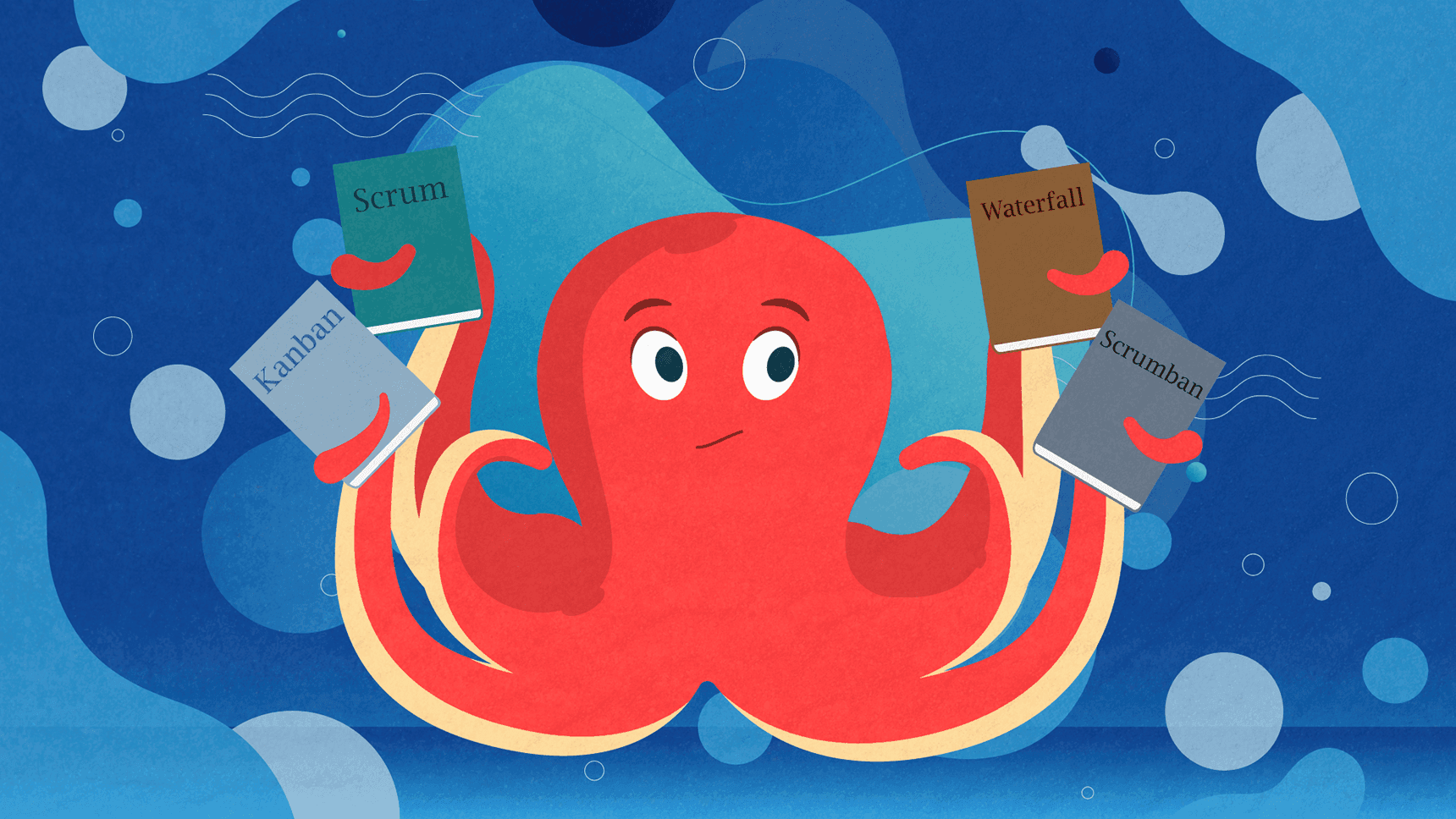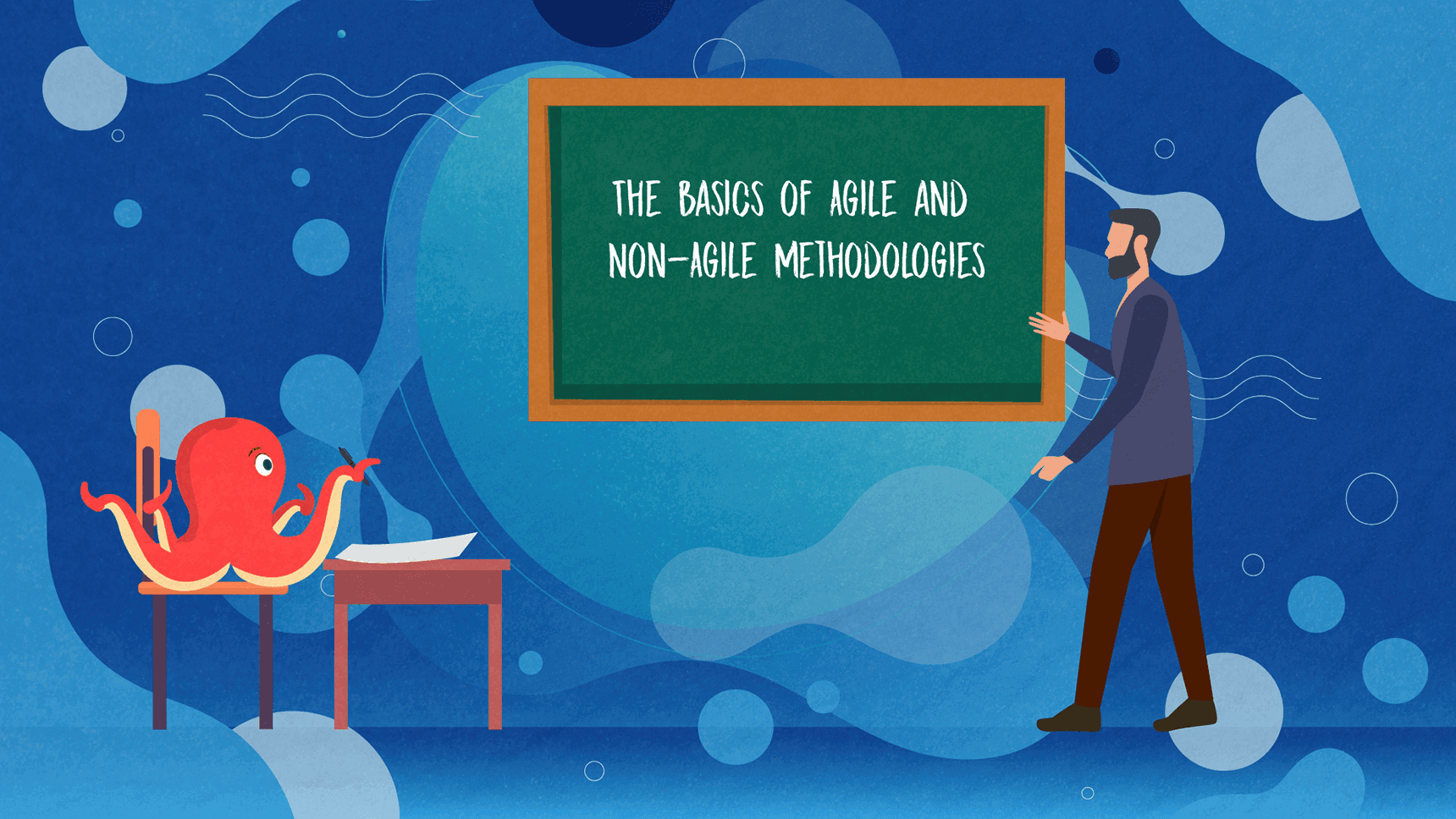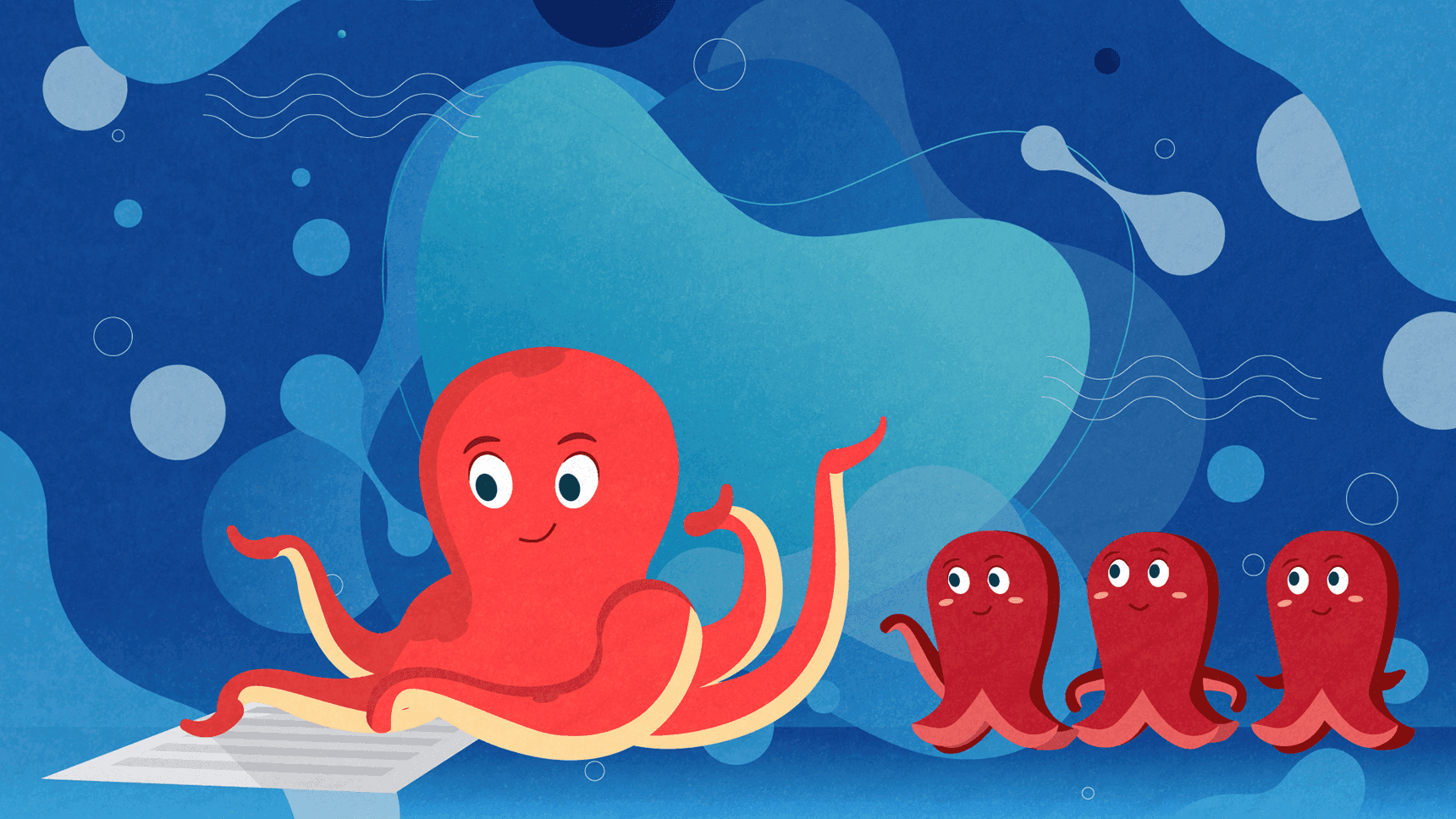Non-Agile vs. Agile Methodologies: What’s the Difference?

Building a top quality product is everyone’s end goal, but software developers often run into a myriad of challenges along the way. Apart from being pressured to pay close attention to the latest tech and industry trends, software developers also need to make sure that they’re becoming better organized and more efficient in their work.
We at Share IT have been in the software development for a while now and our experience has taught us that proper organization and planning play a key role in the creation of outstanding software.
To ensure that everything is covered and that the creation process runs as smooth as possible, the first thing a software developer needs to have is a well-thought-out plan and a clear process in place. It’s imperative to choose the right software development methodology that will work best for your project. However, that’s often easier said than done.
There are two basic types of methodologies to choose from: agile and non-agile. As you can probably assume, these methodologies are applied in different scenarios.
In today’s article, we at Share IT will provide you with an introduction to non-agile and agile software development approaches, and explain the advantages and disadvantages of using these methodologies. If you’re someone who’s looking to outsource their software development, this article can help you understand one major segment of the DevOps lingo, as well as their way of work.
The Basics of Agile and Non-Agile Methodologies

Before we get into specifics and start comparing these approaches, let's first cover the basics and answer the following question:
“What are non-agile and agile software development methodologies?”
Non-agile
Non-agile, a.k.a. the Waterfall or linear, is a traditional method for creating software. It splits the software development lifecycle (SDLC) into 6 different stages where you tackle challenges one stage at the time. You can only proceed to the next stage when the current stage is 100% done.
These are the usual stages:
- Planning
- Requirements
- System and software design
- Implementation
- Testing
- Deployment
- Maintenance/Updates
Due to its rigid structure, most older software developers tend to call this methodology a “plan-driven process”. To successfully use the Waterfall methodology, you need to have a clear plan when certain things are done, how they are done, and of course - why they are done. The Waterfall works best for bigger teams that have clear goals, requirements, and a solid understanding of the scope of the work that needs to be done before and after the initial kick-off.
Agile
Agile is an incremental, iterative approach to software development. Unlike the Waterfall approach that has a rigid structure and demands that you complete your product one phase at a time, agile is a lot more loose and open to changes. This methodology revolves around the idea of breaking down project requirements into smaller bits of user-functionalities, which are called “user stories”. These are then prioritized and delivered continuously in short cycles which are called “iterations”.
Absolute customer satisfaction is always the end goal of the agile approach. This means that the focus of each iteration should be built around the idea of providing a higher quality solution for the customer.
In order for the agile approach to actually bring results, cross-functional teams work in so-called “sprints” of 2 weeks to 2 months. The goal of every sprint is to build usable software which they can give to the customers to test. Once the customer provides feedback, the devs take the comments to mind and use them to develop a plan for the future iteration of the product. The work is organized into a backlog that is prioritized based on business or customer value.
Agile Methodologies Provide More Flexibility...

As you can probably guess on your own after reading our description of both non-agile and agile methodologies, these are two quite different processes. The selection of a certain methodology depends on the project and the team that’s in charge of its development.
Unlike the Waterfall methodology which is a reliable “by the book” process filed with concrete steps and phases, agile is more about being light on your feet and moving fast, releasing usable products as often as possible, and responding to actual customer needs. Everything revolves around effective leadership, teamwork, accountability, and quick face-to-face communication.
Working in agile means that you frequently have to pivot and go against your initial plan. That’s why making a full list of requirements and a complete SOW before starting work is often a huge waste of time.
In agile, you learn on the go and frequently “tweak” your plan in accordance with what the business stakeholders and customers are saying. That’s why retaining as much flexibility as possible throughout the development cycle is very important in agile.
Depending on the project and team that’s in charge of the development, this can be both an advantage and disadvantage.
Because reprioritizing tasks is a big part of agile, keeping track of all the delivery dates and making sure that the team completes everything that you agreed with a client can easily become your worst nightmare. If you’re constantly changing the priority of specific activities and adding additional sprints, it’s quite possible that certain things will be lost in the noise. Since agile is so flexible, implementing frequent iterations based on the evolving customer feedback can lead to the delivery of a significantly different product than initially agreed with the client.
...But Non-Agile Methodologies Ensure Predictability

With the Waterfall, things are quite different.
First of all, progress is easily measured because the full scope of the work is known in advance. Even though the management part is easier with the Waterfall approach since everything is done “by the book” based on quality documentation, this model also has its disadvantages.
Lack of flexibility is the biggest downside of this approach. Because The Waterfall is a sequential model, you can’t bounce between phases and introduce changes whenever you want. Only when you’re truly done with a specific phase can you go back and tweak what needs to be tweaked.
Without a sufficient plan and a strong, data-driven business case, using non-agile methodologies can backfire. For example, end users might not react to the product as expected once it gets launched. If the documentation was wrong and the product turns out to be not competitive enough, the client will certainly ask for revisions and require additional work. Alas, fixing the problem at such a late stage will require additional time and unplanned project expenses.
Non-Agile or Agile: How to Choose the Right Methodology?
Since we made it clear that both non-agile and agile methodologies are two quite different processes that are used in different organizations for different types of products, there is a number of factors that developers consider before opting for one of these models:
- Plan and documentation
- Project scope and size
- Business environment
- The need for creativity and innovation
- Team size and capabilities
- Available resources (costs, time frames, etc.)
- Customer desires and their availability
This might be a good time to underline the fact that none of the two methodologies is per se better than the other one.
Generally, the agile model works better where there are a lot of uncertainties at play. Naturally, in these cases, the development approach needs to provide flexibility and enable a lot of ‘testing on the go’ in order to create a valuable product, i.e. a product which addresses the exact pain points it was intended for.
The non-agile model works well for situations where the budget is tight and so is the schedule. Here, there is not much room or need for creativity and innovation. Predictability of costs is a priority.
At Share IT, We Make the Best of Both Agile and Non-Agile
If you’re not sure which methodology would be the best for your specific project, don’t worry: at Share IT, we use both methodologies and even combine them, depending on each individual case.
We offer two constructional models in order to adapt to our clients’ needs and optimize the development process so that it is as efficient as possible. Since every business is unique, our consultants can help you figure out whether Time & Materials of Fixed Price is the better model for your project. See our comparison table here.
Share IT developers use both agile (Scrum, Kanban, Scrumban) and non-agile (Waterfall) processes that bring the best results and ensure that you get the best value for your money.
Are you ready to talk about your project? Contact us today, we’re always happy to hear from you.